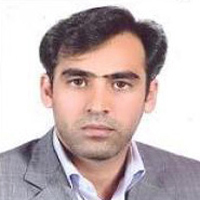Analysis of Urban Vulnerability Indexes with the Approach Seismic Disaster Management Using Fuzzy Network Analysis Process (FANP)(Case study: Urmia city)
The occurrence of natural disasters such as earthquakes, in urban texture and in population density region has caused hard damage. Regarding the country’s location on the earthquake zone, the current study has studied Urmia city due to natural features and the risk of seismicity in order to identify the most important damaging factors in order to manage the urban disaster caused by an earthquake.
This research is descriptive and analytical in method and applied in purpose. In the descriptive section, the results of the general census of population and housing in 1395, documents and library studies have been used, and in the Analytical section, the Network Analysis process (ANP) and fuzzy operators in ARC GIS software have been applied.
Geographical area of research:
The study area (statistical blocks) with an area of 4854.91 ha contains 91% of the total area of Urmia city, which has a population of 727066 people (other than Golmankhaneh Town).
Based on the 2016 census and based on the information obtained from statistical blocks, the rate of population and the number of families in the area were 727066 people and 222737 families, respectively. The study area includes 97.83% of the population of Urmia city.
The highest vulnerability is in areas with a slope of more than 20% and areas with high population density are observed. Areas with very high vulnerability with 34.12%, high with 11.81%, medium with 30.47%, low with 20.89% and very low with 2.7% accounted for the area of statistical blocks. In general, it can be said that 45.93% of the study area is vulnerable based on the criteria used in the analysis.
In vulnerable earthquake zoning in Urmia, 5 vulnerable classes were obtained. The very high vulnerability class in the Zone 2 urban area with an area of 341.09 hectares (13.19%) has the most vulnerable uses, Zone 3 with 8.24%, Zone 1 with 7.57%, Zone 4 with 2.76% and Zone 5 with 1.92% have the most uses with very high vulnerabilities, respectively.
-
Spatial analysis of the trend of regional inequalities in Iran
Mirnajaf Mousavi *, Nima Bayramzadeh
Journal of of Geographical Data (SEPEHR), -
Investigating the Feasibility of Good Urban Governance with Emphasis on Spatial Justice (Case Study: 5 Regions-Urmia)
Mirnajaf Mousavi *, Reza Ghaderi, Nima Bayramzadeh, Roya Kamel Nia
Research and Urban Planning, -
Assessing urban quality of life using remote sensing and GIS (Case study: Urmia Urban Region)
, Bakhtaran Feizizadeh*
Journal of Applied Researches in Geographical Sciences, -
An Analysis on Land Use Process Changes and Forecasting in Urmia City Using SVM Model and Neural Networks
*, , Hojjat Mohammadi Torkamani
Iranian Journal of Remote Sencing & GIS,


